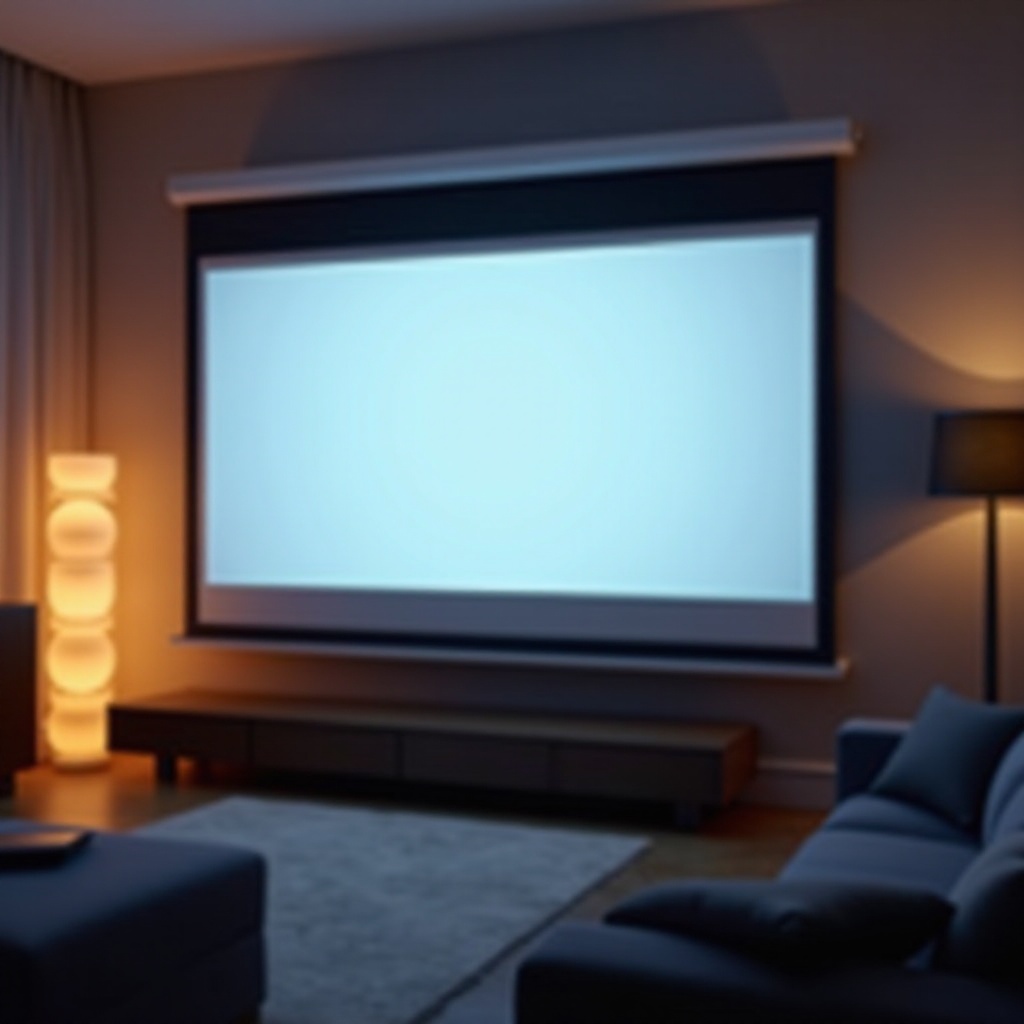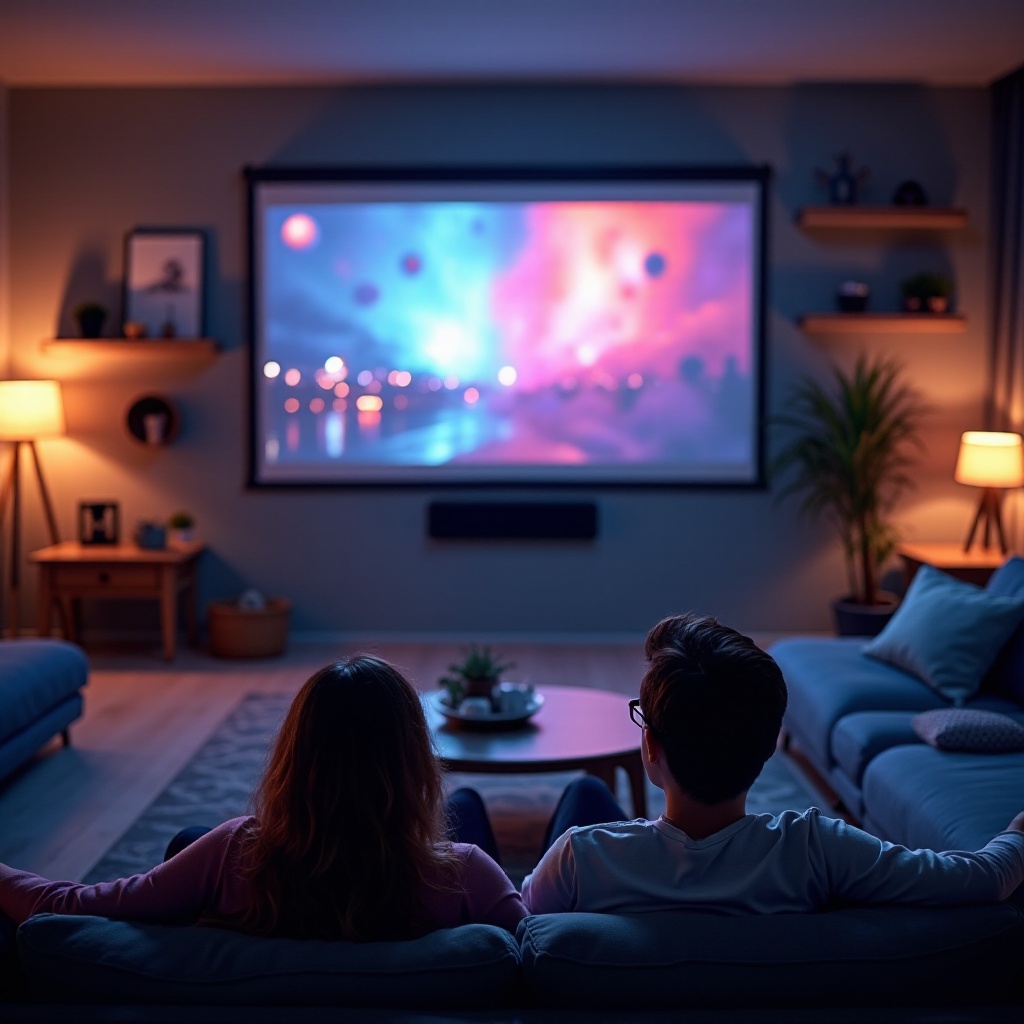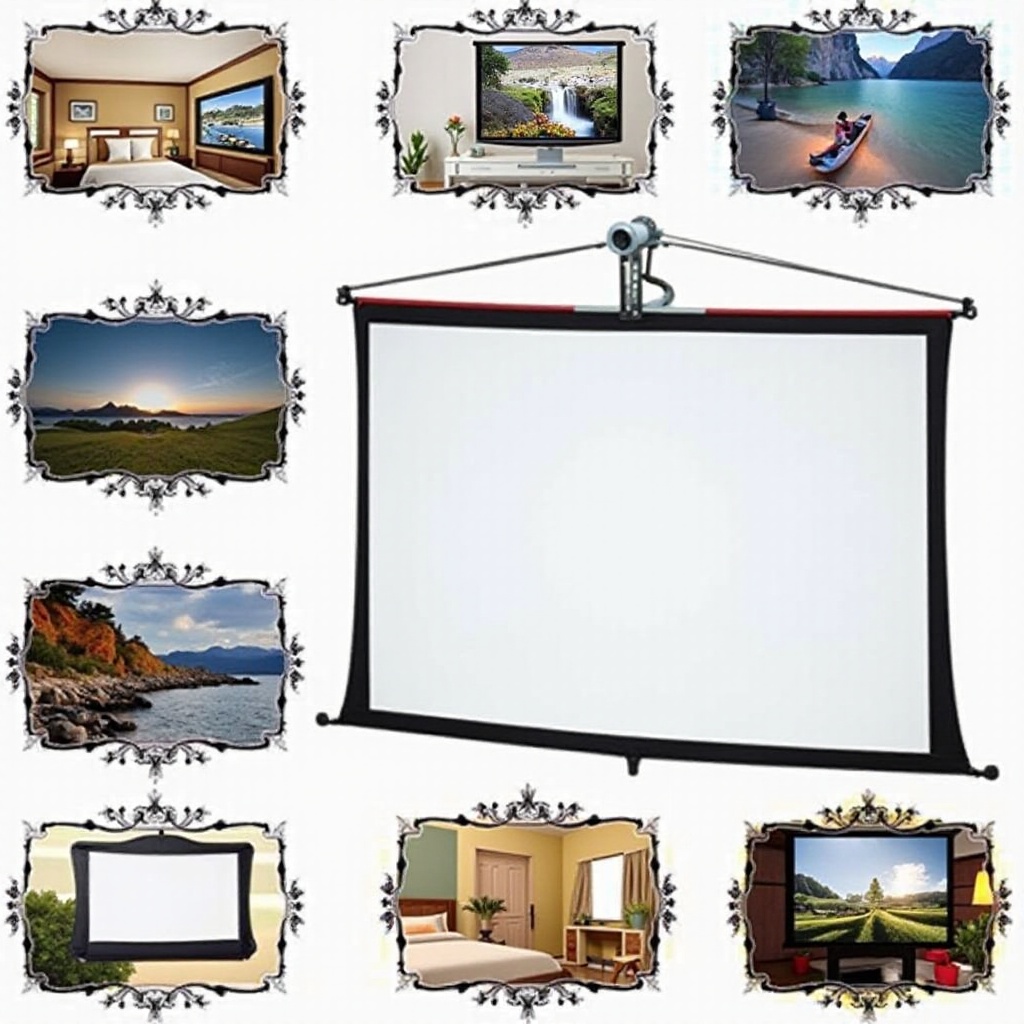Introduction
Portable projector screens have revolutionized the way we experience media and presentations. Whether you’re hosting a movie night under the stars, giving a business presentation, or creating an immersive gaming setup, the right portable projector screen makes all the difference. These screens are designed to be easy to transport and set up, providing flexibility and convenience for both indoor and outdoor settings.
This comprehensive guide will walk you through the essential aspects of choosing a portable projector screen. We’ll discuss why you need one, key features to look out for, various types available, and review some of the top models for 2024. By the end, you’ll have all the information needed to make an informed decision and elevate your viewing experience.

Why You Need a Portable Projector Screen
A portable projector screen offers numerous advantages over traditional TV screens and fixed projector setups. Here are a few compelling reasons why investing in one could enhance your media consumption:
- Versatility: Whether for professional or personal use, portable screens can be utilized in various settings.
- Enhanced Viewing Quality: They provide better image quality with optimized screen materials and reduce ambient light interference.
- Convenience: Easily transportable, these screens can be used wherever you need, making travel and outdoor movie experiences more enjoyable.
Portable projector screens are a game-changer for anyone who values flexibility and high-quality viewing.

Key Features to Consider
Choosing the best portable projector screen involves understanding several key features that influence performance and usability.
Screen Material
The material of the screen impacts image quality significantly. A good screen material enhances brightness, contrast, and color accuracy. Look for materials like matte white, high-gain, or tensioned screens. Matte white screens are excellent for diffusing light evenly, while high-gain screens are better suited for brighter environments.
Size and Aspect Ratio
The size and aspect ratio you choose should match your projector specifications and the space where you’ll be using the screen. Common aspect ratios are 4:3 for presentations and 16:9 for movies and gaming. Ensure the screen size fits comfortably in your designated area and complements your projector’s throw distance.
Portability and Ease of Setup
A truly portable screen should be lightweight, compact, and easy to set up and dismantle. Look for screens that come with carrying cases, quick-release mechanisms, and require minimal assembly. This ensures you can have the screen ready whenever needed without hassle.
Compatibility with Projectors
Not all screens are compatible with every projector. Verify the screen’s compatibility with your projector’s resolution and throw distance. Compatibility ensures that you get the best image quality without any alignment or scaling issues.
Types of Portable Projector Screens
The market offers various types of portable projector screens, each with its own set of advantages. Understanding these can help you choose the right one for your needs.
Tripod Screens
Tripod screens are highly portable and easy to set up, making them perfect for on-the-go presentations and movie nights. They come with adjustable heights and are generally lightweight. However, they may not be the best choice for larger audiences due to their stability limitations.
Pull-Up Screens
Pull-up screens are housed in a base that sits on the floor. They are easy to set up, with the screen pulling up from the base. These screens are highly stable and great for presentations due to their seamless design and quick setup.
Foldable Screens
Foldable screens are designed for ultimate portability, often packed in small bags for easy transport. They can be hung on walls or mounted on stands and are ideal for outdoor events. However, they might require more setup time to ensure a wrinkle-free surface.
Inflatable Screens
Inflatable screens are perfect for outdoor movie experiences and large gatherings. They are easy to set up; just plug in the air blower and the screen inflates within minutes. These screens are robust and provide a large viewing area, but they do require a power source for the blower.

Top Portable Projector Screens for 2024
Here are some of the best portable projector screens you should consider for 2024:
XYZ Screen (Review)
The XYZ screen offers a high-gain matte white finish that delivers exceptional image quality. Its lightweight aluminum frame and tripod base make it easy to set up and transport. Suitable for both indoor and outdoor use, it is compatible with 4K projectors and offers multiple aspect ratios.
ABC Screen (Review)
The ABC Screen is known for its foldable design and comes with a convenient carrying case. Made from durable fabric, it provides a wrinkle-free viewing surface. Ideal for outdoor use, it can be mounted on any flat surface and supports both 16:9 and 4:3 aspect ratios.
DEF Screen (Review)
The DEF Screen stands out with its quick pull-up mechanism and robust base. Its high-definition material ensures bright and clear images, making it perfect for business presentations and classroom settings. The screen is compatible with most projectors and offers hassle-free setup.
GHI Screen (Review)
An excellent choice for outdoor parties, the GHI Screen is an inflatable model that boasts a massive viewing area. Despite its size, it’s easy to inflate and deflate, coming with a powerful blower and ground stakes for additional stability. Its durable material withstands various weather conditions.
Practical Tips for Setting Up
Setting up a portable projector screen can be straightforward if done correctly. Here are some practical tips to ensure a smooth setup process:
- Choose the Right Location: Find a flat and stable surface, and ensure there is enough space for your projector’s throw distance.
- Ensure Proper Alignment: Align the projector with the screen’s center to avoid keystone distortion. Trapezoid adjustments can help, but alignment from the beginning is ideal.
- Tighten the Screen: Make sure the screen material is tensioned properly to avoid any wrinkles or sagging.
- Control Ambient Light: Minimize ambient light around the screen to enhance image quality. Use blackout curtains indoors or set up in a shaded area outdoors.
Following these tips will help you create an optimal viewing experience with your portable projector screen.
Conclusion
A portable projector screen is an essential accessory for anyone looking to enhance their viewing and presentation setups. By considering key features and understanding the different types available, you can choose a screen that meets your needs perfectly. The reviewed screens for 2024 provide excellent options for various settings and preferences. Set up your screen with care, and you’re all set for an exceptional viewing experience.
Frequently Asked Questions
What size portable projector screen should I choose?
Choosing the right size depends on your space and projector capabilities. Generally, a screen size between 80 to 120 inches is suitable for most purposes.
Can portable projector screens be used outdoors?
Yes, many portable projector screens are designed for outdoor use. Look for screens with durable materials and sturdy frames to withstand outdoor conditions.
How do I clean and maintain my portable projector screen?
To clean your screen, use a soft cloth and mild detergent. Avoid abrasive materials that could damage the screen surface. Regularly check for any dirt or mold, especially if you store the screen after outdoor use.

